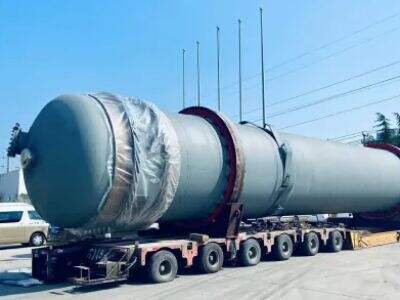Understanding Thermal Efficiency in Drying Technology
In industrial processes across sectors like petrochemicals, new energy, and biochemicals, drying is a highly energy-intensive operation. The thermal energy utilization efficiency of a dryer directly impacts operational costs, carbon footprint, and overall plant economics. It refers to the percentage of input heat that is effectively used to remove moisture from the material, as opposed to being lost through exhaust gases, radiation, or improper system design. For a company like Shandong Tianli Energy Co., Ltd., with its extensive experience in over 3,000 projects, optimizing this efficiency is not just a technical goal but a core competitive advantage delivered to clients through advanced engineering and integrated solutions.
The Critical Role of Process Design and Customization
There is no single "best" dryer type for all applications; the highest thermal efficiency is achieved by perfectly matching the dryer technology to the specific material characteristics. A one-size-fits-all approach leads to significant energy waste. This is where the capabilities of a provider with a dedicated design institute and R&D center, like Tianli, become crucial. Factors such as the material's initial and final moisture content, heat sensitivity, physical form, and chemical properties must be meticulously analyzed. The most thermally efficient system is often a custom-designed solution that may combine different drying principles or incorporate heat recovery mechanisms, ensuring that the energy input is used with maximum effect for that particular material.
Advanced Dryer Types with Inherent Efficiency Advantages
While customization is key, certain dryer designs are renowned for their superior thermal efficiency in appropriate applications. For instance, Rotary Dryer indirect dryers, such as thin-film or disc dryers, often exhibit higher efficiency because the heating medium does not directly contact the material, reducing the volume of exhaust gas and associated heat loss. Furthermore, closed-loop systems like heat pump dryers can recycle latent heat from the exhaust, dramatically improving overall efficiency. Another efficient configuration is the multi-stage dryer, which uses different conditions in successive stages to optimize heat usage. The capability to manufacture and integrate such core equipment allows a provider to select and engineer the most efficient hardware foundation for the process.
System Integration and EPC as the Ultimate Efficiency Driver
Ultimately, the thermal efficiency of a dryer is not solely determined by the drying unit itself, but by the entire system in which it operates. This holistic view is the domain of Engineering, Procurement, and Construction (EPC) contracting. A provider like Tianli, which offers EPC services, can ensure that the dryer is perfectly integrated with upstream and downstream processes. This includes designing efficient heat exchangers, optimizing insulation, implementing advanced control systems for precise temperature management, and recovering waste heat for use in other parts of the plant. It is this comprehensive approach to project execution—from core process package technology to final commissioning—that unlocks the highest possible thermal energy utilization, turning theoretical efficiency into tangible operational savings for clients in the new materials and chemical industries.

 EN
EN
 AR
AR
 BG
BG
 HR
HR
 CS
CS
 DA
DA
 NL
NL
 FI
FI
 FR
FR
 DE
DE
 EL
EL
 HI
HI
 IT
IT
 JA
JA
 KO
KO
 NO
NO
 PL
PL
 PT
PT
 RO
RO
 RU
RU
 ES
ES
 SV
SV
 TL
TL
 IW
IW
 ID
ID
 SR
SR
 UK
UK
 VI
VI
 TH
TH
 TR
TR
 FA
FA
 AF
AF
 MS
MS
 UR
UR
 BN
BN
 LO
LO
 LA
LA
 MY
MY
 KK
KK
 UZ
UZ
